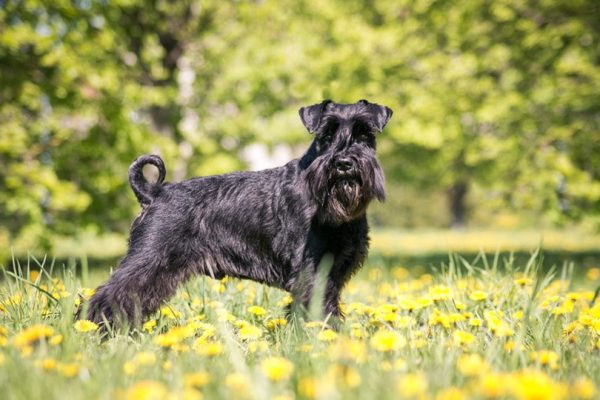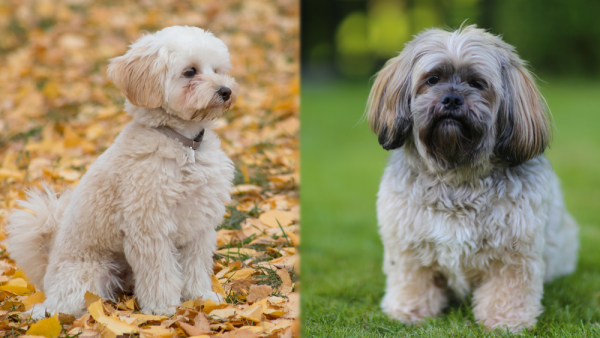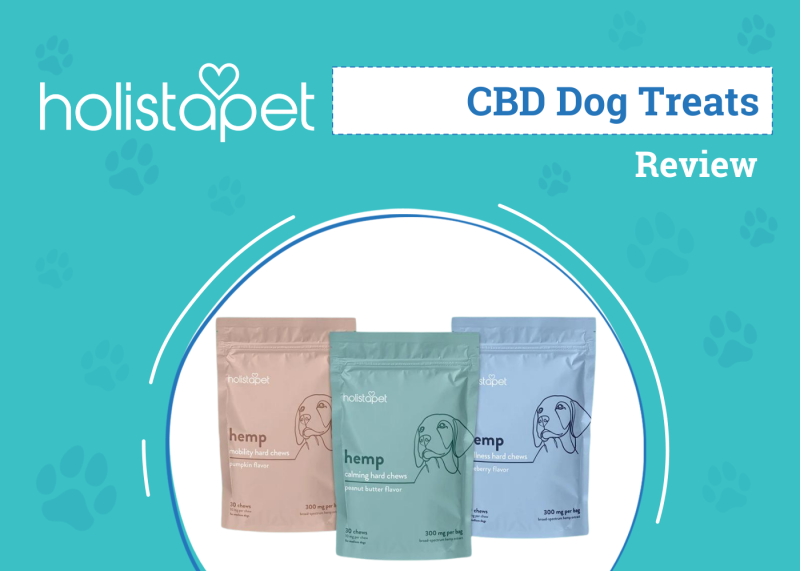Their name gives more than a hint as to this cheerful doggie’s heritage. The lovable Labradoodle is one of the original “designer dogs” created by crossing a Labrador Retriever with a Poodle.
A Merle Labradoodle is not a separate breed, but rather an unusual color pattern variation exhibited by certain Labradoodle pups. The merle patterning can be present in various base coat colors but always results in an exotic mottled appearance caused by the presence of lighter patches of fur.
Breed Overview
Height:
14–16 inches (Mini), 17–20 inches (Medium), 20–26 inches (Standard)
Weight:
15–28 pounds (Mini), 29–50 pounds (Medium), 51–85 pounds (Standard)
Lifespan:
12–16 years, depending on size; smaller dogs generally live longer
Colors:
Blue merle, red (and diluted red) merle, chocolate merle, black merle, brown merle, sable merle, fawn merle, yellow merle
Suitable for:
Active young or old singles and families with kids, multi-species households, first-time pet owners
Temperament:
Loving, energetic, friendly, intelligent, playful, easy to train
The variation in size, coat texture, and color for this breed is obvious considering the dog’s hybrid heritage. The Labrador Retriever as a breed is consistent, varying almost only in color. Poodles, however, come in a wide variety of colors and sizes, ranging from toy to standard, with any of these kinds potentially providing parentage to the Labradoodle.
Labradoodle “types” provide another aspect of variation. There is the normal “generic” Labradoodle, which is a simple Labrador-Poodle cross, and the Australian Labradoodle. The latter includes a few other breeds in their lineage, such as Spaniels, Terriers, and other Retrievers.
Labradoodle type also varies according to generational breeding practices—for example, whether they are first generation (F1) or second generation (F2). On paper, variety can become quite complex in multigene Labradoodles, even though a greater level of physiological standardization may be achieved.
All that said, any of these Labradoodle variations and types can exhibit the merle coloration pattern.
Merle Labradoodle Breed Characteristics

The Earliest Records of Merle Labradoodles in History
In recorded history, the Labradoodle has been around since the 1950s, when a Labrador Retriever was crossed with a Standard Poodle. The famous land and water record-setter Sir Donald Campbell was the first to use the name “Labradoodle” in 1955 to describe his Lab-Poodle cross, Maxie.
The “breed” was not immediately popular for reasons unknown, especially considering the dog’s undeniable charm and good nature. It wasn’t until 1989 that Labradoodles were officially named and introduced by Australian breeder, Wally Conran. In response to the need for a “hypoallergenic” guide dog, he crossed a Labrador with a Poodle after unsuccessfully trying to train Standard Poodles to the task. The resultant cross was a success in terms of being trainable and having a low-shedding coat. One of the puppies from the first official Labradoodle litter, Sultan, went on to become a much-loved guide dog to a lady in Hawaii for the next 10 years.
How Merle Labradoodles Gained Popularity
Wally Conran’s breeding exercise brought the Labradoodle into the public eye, and they began to experience a surge in popularity. Service dog organizations were delighted to have another useful breed to add to their ranks, especially one that wouldn’t trouble allergy sufferers very much.
The general dog-loving public also fell in love with the Labradoodle, and they started to become sought after as a pet. During the last few decades, the Labradoodle has firmly established themselves as one of the most popular mixes to own. Their loving, gentle, and obedient nature ensures that they are likely to remain so for the indefinite future.
Certain Labradoodle lovers have a particular affinity for the merle pattern of coloring and will choose a merle pup over one of their more plainly colored brethren. There are a few health concerns regarding Merle Labradoodles, though, and it is important to be fully informed about these.
Formal Recognition of Merle Labradoodles
As a crossbreed, the Labradoodle is not formally recognized by Kennel Clubs, including the AKC. That said, many clubs have introduced a separate category for hybrids and do allow them to be registered under these conditions, should an owner wish.
However, several dedicated Labradoodle organizations exist, albeit primarily for the Australian version. These include the Australian Labradoodle Association of America, the Australian Labradoodle Club of America, and the Worldwide Australian Labradoodle Association.
There is a drive among certain Labradoodle breeders to create a breed standard that will enable the mix to be categorized as an official “pure” breed.
Top 7 Unique Facts About Merle Labradoodles
1. Merle Labradoodles Can Be at Higher Risk of Certain Health Conditions
Merle-patterned Labradoodles are at a higher risk of being born with visual and/or auditory defects. The chances of these defects being present are significantly higher (to the point of almost being assured) if both parents carry the merle gene. This homozygous gene condition is known as “double merle.”
Double-merle pups have a high chance of being born completely blind or deaf. It is unanimously accepted by breeders and Labradoodle organizations that interbreeding merles is unethical and cruel. Consequently, no ethical and reputable breeder will practice this.
2. Merle Labradoodle Coats Are Variable
Due to their mixed parentage, Labradoodles can inherit more of the coat characteristics of either one of their parents. They can have soft or wiry fur that is straight, curly, or wavy.
3. Many Merle Labradoodles Have Light-Colored Eyes
Many Merle Labradoodles have captivating blue or light-gray eyes. These result from the same gene that is responsible for their unique coat pattern.
4. Breeders Are Trying to Establish the Labradoodle as a Breed in Their Own Right
By multigenerational breeding, some breeders are trying to establish a Labradoodle breed standard. This is achieved by breeding second-generation (F2) and consequent (F1b, F3, etc.) generation Labradoodles to one another. However breeders of F1 Labradoodles are concerned that this practice may result in undesirable health conditions that result from inbreeding.
5. A Labradoodle Called Fang Was a TV Star in the 1960s
A Labradoodle named Fang achieved a modicum of television fame in the 1960s through their regular appearances on a popular television show called “Get Smart,” which was co-created by American funnyman Mel Brooks.
6. Labradoodles Are Popular With Celebrities
Many celebrities own and adore Labradoodles. Tiger Woods, Joe Biden, Christie Brinkley, and Graham Norton have all owned or currently own a Labradoodle.
7. Blue Merle Is the Most Common Labradoodle Merle Pattern
The most common merle variation in Labradoodles is blue merle. Red merle and other merle variations are rarer.

Do Merle Labradoodles Make Good Pets?
Labradoodle owners will be the first to tell you that they’ve hit the pet jackpot! These intelligent and kind yet playful and mischievous dogs are a joy to own. They become invaluable members of the family and make rewarding companions.
Labradoodles have inherited all the desirable qualities of each of their Labrador and Poodle parents. Like their Lab parent, they just love kids and will play gently with them for hours. They are equally enamored with the other pets in the household. From their Poodle parent, they inherit intelligence, trainability, and low-shedding status.
Labradoodles love their humans and like nothing more than to be around them and please them. Of course, the inheritance of traits does not happen uniformly or consistently. A Labradoodle may end up being more like one or the other of their parents in terms of appearance and personality.
Labradoodles are also prone to several health conditions, which will need to be monitored in consultation with your veterinarian. These include hip dysplasia, congenital eye issues (particularly Merle Labradoodles), and heart disease.
Depending on the degree of fuzz your Labradoodle has inherited from their Poodle parent, they will require regular grooming to keep their coat tangle free. This Doodle’s parents are both active and intelligent breeds, so they will also need daily exercise and stimulation.

Conclusion
There’s no denying the Merle Labradoodle’s exotic good looks and alluring disposition. Although not immediately popular following their initial introduction to the dog world, the Labradoodle has more than made up for this in recent decades.
The Labradoodle has firmly entrenched themselves in the hearts of dog lovers around the world, and their popularity is sure to increase even more in the future.
Featured Image Credit: aukalou, Shutterstock


















